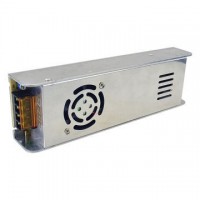No products
New products
-

BlackCopper BC-EGP-10G015-Z
Transform Your Business with BlackCopper BC-EGP-10G015-Z Dual Screen POS...
Rs 0
Catalog
Power Supply: A Comprehensive Guide
A power supply is an essential component of any electronic device. It converts the alternating current (AC) power from your wall outlet to direct current (DC) power that your devices need to operate. There are many different types of power supplies, each with its own unique characteristics.
In this compreh...
Power Supply: A Comprehensive Guide
A power supply is an essential component of any electronic device. It converts the alternating current (AC) power from your wall outlet to direct current (DC) power that your devices need to operate. There are many different types of power supplies, each with its own unique characteristics.
In this comprehensive guide, we'll delve into the world of power supplies, exploring their different types, how they work, and what factors to consider when choosing the right one for your needs.
Types of Power Supplies
Power supplies come in a wide variety of shapes and sizes, designed to meet the specific needs of different devices. Here are some of the most common types:
- Linear Power Supply: These are simple and reliable power supplies that use a transformer to reduce AC voltage and a rectifier to convert it to DC. They're often found in older devices.
- Switching Power Supply: These power supplies are more efficient than linear power supplies, using switching circuits to convert AC to DC. They're commonly used in modern electronics, including computers, laptops, and smartphones.
- Uninterruptible Power Supply (UPS): These power supplies provide backup power in case of a power outage, ensuring that your device continues to operate smoothly. They're often used for critical equipment like servers and medical devices.
How Power Supplies Work
Power supplies work by converting AC power to DC power. This process typically involves the following steps:
- Step-Down Transformer: The AC voltage is reduced by a transformer to a lower voltage.
- Rectification: The reduced AC voltage is converted to DC by a rectifier, which allows current to flow in only one direction.
- Filtering: The DC voltage is then filtered to remove any remaining AC ripple.
- Regulation: A voltage regulator ensures that the output voltage remains stable, even when the input voltage or load changes.
Choosing the Right Power Supply
When choosing a power supply, you need to consider several factors, including:
- Voltage and Current: The power supply should provide the correct voltage and current for your device. Check the specifications of your device to determine these values.
- Efficiency: A more efficient power supply will convert more of the input power to output power, reducing energy waste and heat generation.
- Size and Form Factor: Consider the physical size and form factor of the power supply to ensure it fits in your device or enclosure.
- Noise Level: Some power supplies can produce noise or hum, which may be undesirable in certain applications. Look for a power supply with a low noise level.
Power Supply Safety
Power supplies can be dangerous if not handled properly. Here are some safety tips to keep in mind:
- Avoid Overloading: Don't connect more devices to a power supply than it is rated for.
- Use the Correct Voltage: Make sure the power supply is rated for the voltage of your power outlet.
- Protect from Moisture: Keep power supplies away from water or moisture.
- Inspect for Damage: Regularly inspect power supplies for damage, such as frayed wires or cracked casings.
MB Communication: Your Trusted Power Supply Partner
MB Communication is a leading provider of power supply solutions. Our team of experts can help you find the perfect power supply for your specific needs. We offer a wide range of power supplies, from basic linear power supplies to high-performance switching power supplies, all at competitive prices.
FAQs
Here are some frequently asked questions about power supplies:
- Q: Can I use any power supply with my device? A: No. You must use a power supply that is specifically designed for your device.
- Q: What does wattage mean? A: Wattage is the power output of a power supply. It is calculated by multiplying the voltage and current.
- Q: How can I tell if my power supply is working properly? A: If your device is functioning correctly, then your power supply is likely working properly. If you experience problems, such as flickering lights or unexpected shutdowns, you may have a power supply issue.
This guide has covered the basics of power supplies. For more in-depth information, please contact MB Communication today. We're here to answer all your questions and help you find the best power supply for your needs.
Power Supply There is 1 product.
-
Black Copper S-360-12
Black Copper Power Supply for cctv camera S-360-12 S-360-12 switch 12VDC 30A 360W transformer power supply12V 30A 360W LED switching power supply
Rs 0Out of stock





